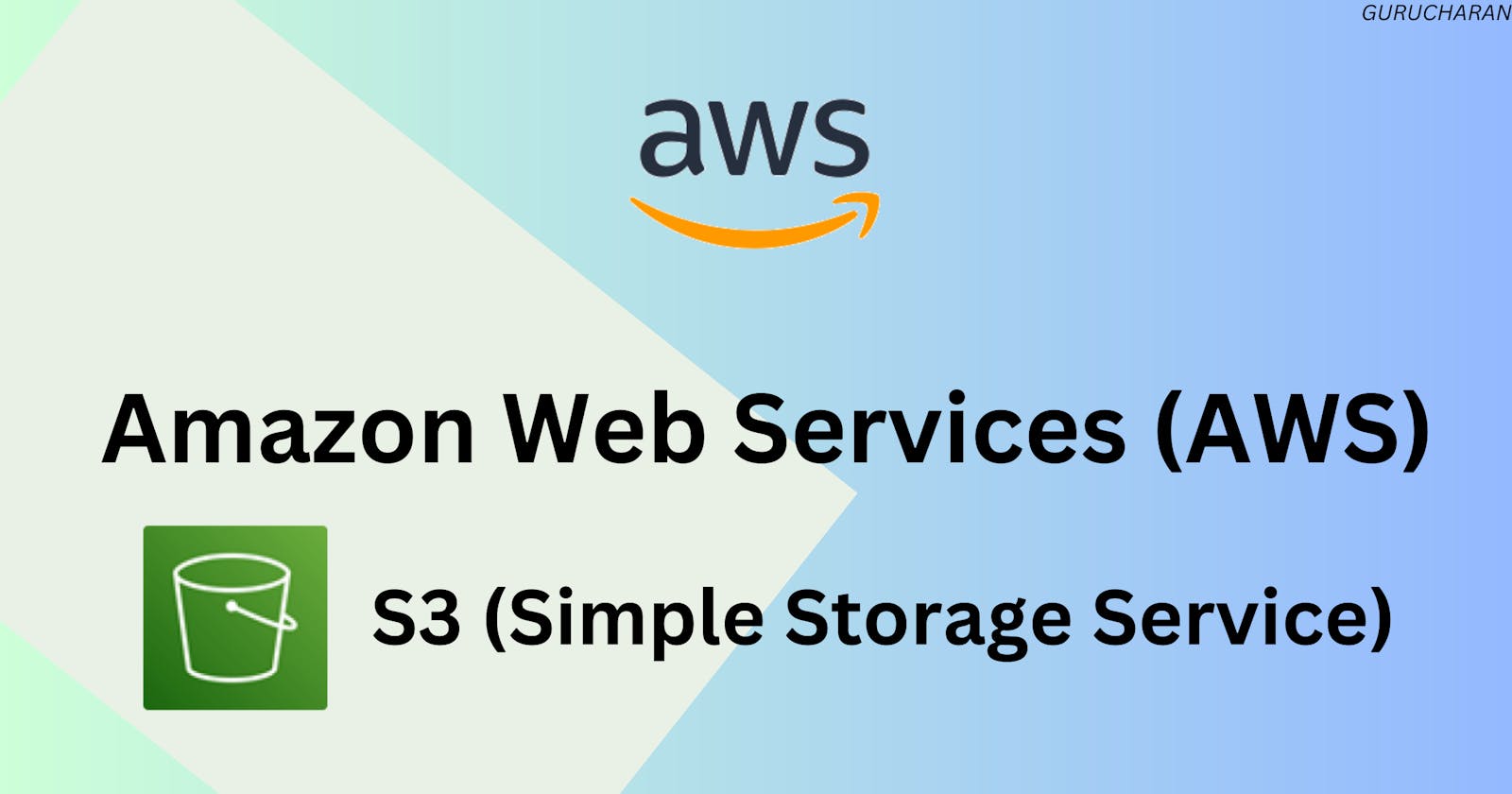Amazon S3 (Simple Storage Service) is a cloud-based object storage service provided by Amazon Web Services (AWS). It offers scalable, secure, and highly available storage for data, applications, and web services. S3 is designed for storing and retrieving large amounts of data from anywhere on the internet, making it a popular choice for businesses of all sizes.
Some of the key features and benefits of AWS S3:
Scalability: Amazon S3 is designed to be highly scalable. You can store and retrieve as much data as you need, without worrying about capacity planning or provisioning. You can also increase or decrease your storage capacity as your needs change.
Durability: Amazon S3 stores your data in multiple locations, providing high durability and availability. This means that even if one data center goes down, your data will still be accessible from another location.
Security: Amazon S3 provides several security features, including encryption, access controls, and audit logs. You can use these features to protect your data and comply with security regulations.
Integration with other AWS services: Amazon S3 integrates with other AWS services, such as AWS Lambda, AWS CloudTrail, and AWS Identity and Access Management (IAM). This makes it easy to build and deploy applications that use S3 as their storage backend.
Cost-effectiveness: Amazon S3 offers a pay-as-you-go pricing model, which means that you only pay for the storage and bandwidth you use. This makes it a cost-effective storage solution for businesses of all sizes.
Some of the key concepts of Amazon S3:
Buckets: A bucket is a container for objects stored in Amazon S3. You can create and manage multiple buckets, and each bucket can contain any number of objects.
Objects: An object is a unit of data stored in Amazon S3. An object can be a file, image, video, or any other type of data. Each object is identified by a unique key, which includes the bucket name and the object name.
Regions: Amazon S3 stores your data in multiple data centers around the world. Each data center is called a region, and you can choose which region to use when you create a bucket. You can also replicate your data to multiple regions for even greater durability and availability.
Access controls: Amazon S3 provides several mechanisms for controlling access to your data, including bucket policies, ACLs (access control lists), and IAM roles. You can use these mechanisms to restrict access to your data and ensure that only authorized users can access it.
How to use Amazon S3:
Creating a bucket: To create a bucket in Amazon S3, you first need to log in to the AWS Management Console. From there, you can navigate to the S3 service and click the "Create Bucket" button. You will then need to choose a name for your bucket, select a region, and configure any additional settings.
Uploading objects: To upload an object to your bucket, you can use the AWS Management Console, the AWS CLI (command-line interface), or the AWS SDK (software development kit). You will need to specify the name of the bucket, the key (object name), and the data you want to upload.
Accessing objects: To access an object stored in Amazon S3, you can use the AWS Management Console, the AWS CLI, or the AWS SDK. You will need to specify the name of the bucket and the key (object name) of the object you want to access.
Managing access controls: To manage access controls in Amazon S3, you can use several mechanisms, including bucket policies, ACLs, and IAM roles. Bucket policies are JSON documents that define who can access your bucket and what they can do with the objects stored in it. ACLs are access control lists that specify permissions on individual objects within a bucket. IAM roles are AWS Identity and Access Management roles that define who can access your bucket and what they can do with it.
Replicating data: To replicate your data to multiple regions, you can use the Amazon S3 Cross-Region Replication feature. This feature automatically replicates your data to a destination bucket in a different region. This can improve your data durability and availability, and can also help you comply with data sovereignty requirements.
Analyzing data: Amazon S3 provides several tools for analyzing your data, including Amazon S3 Inventory, Amazon S3 Storage Lens, and Amazon S3 Object Lambda. These tools allow you to gain insights into your data usage, identify cost savings opportunities, and automate data management tasks.
Integrating with other AWS services: Amazon S3 integrates with other AWS services, such as AWS Lambda, AWS CloudTrail, and AWS Identity and Access Management (IAM). This makes it easy to build and deploy applications that use S3 as their storage backend.
Summary
Amazon S3 is a powerful and flexible cloud-based object storage service that offers scalability, durability, security, and cost-effectiveness. It is designed to store and retrieve large amounts of data from anywhere on the internet, and provides several mechanisms for controlling access to your data. Whether you are building a simple website or a complex big data application, Amazon S3 can provide the storage you need to meet your requirements.
Thank you for reading this blog and if any queries or if any corrections to be done in this blog please let me know.
contact us in Linkedin ,Twitter or email-id gurucharanu716@gmail.com
